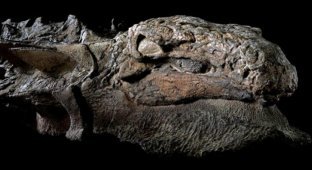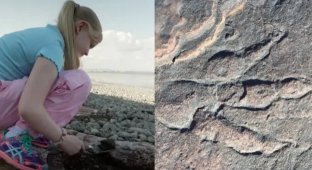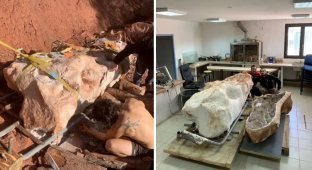Dinosaur imprint in the Cathedral of St. Ambrose: the ancient secret of Vigevano (7 photos)
In the small Italian town of Vigevano, in the province of Pavia in northern Italy, lies one of the most unusual archaeological mysteries - a dinosaur footprint, forever imprinted on the building of the Basilica di Sant'Ambrogio. 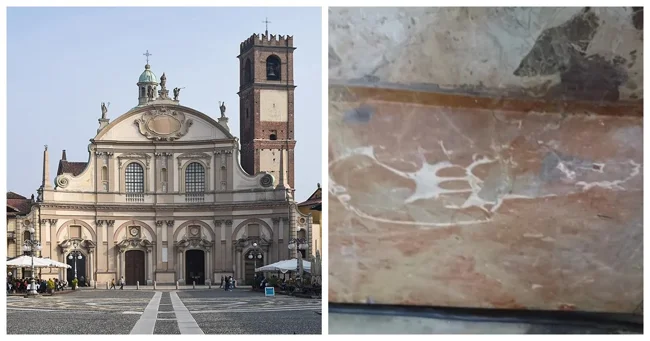
This unique trace of the presence of an ancient creature, accidentally found in the center of a medieval church, became a symbol of the intersection of eras, when millions of years of Earth history meet human culture and faith.
How did the footprint end up in the cathedral? 
The Cathedral of Sant'Ambrogio in Vigevano was built in the 16th century. One of the slabs contains the remains of an ancient creature - a dinosaur - fossilized in the walls. The skull, nasal cavity and teeth of what appears to be a dinosaur skull can be seen using X-rays.
This specimen was found in the walls sometime between 1532 and 1600, when the stone was cut into pieces and transported to this location for the construction of the cathedral. A second part of the same skull was found in another slab nearby. 
Thus, visitors to the cathedral can see part of an ancient creature that roamed the earth long before man appeared.
The dinosaur part in the cathedral is not just a curiosity, but an important reminder of how the geological history of the Earth can be hidden literally under our feet. Scientists believe that such finds help to better understand the evolution of life on the planet and the diversity of dinosaurs. 
In addition, this imprint has become a symbol of how art, history and science can be united in one place. The majestic cathedral dedicated to the Christian faith inadvertently preserved the trace of a creature that lived long before the advent of religions and human civilization.
Legends and Interpretations 
Locals and tourists often attribute mystical significance to this fragment. Some consider it the mark of the devil, citing folklore and legend. However, to scientists, it is just further evidence that dinosaurs once roamed the lands that are now part of Italy. 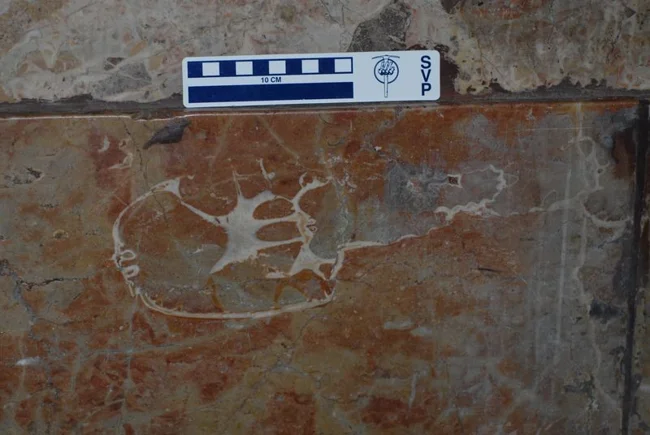
Some paleontologists believe that the fossils are not dinosaurs: they are a cross-section of an ammonite, an extinct type of mollusk that is quite common in fossils. 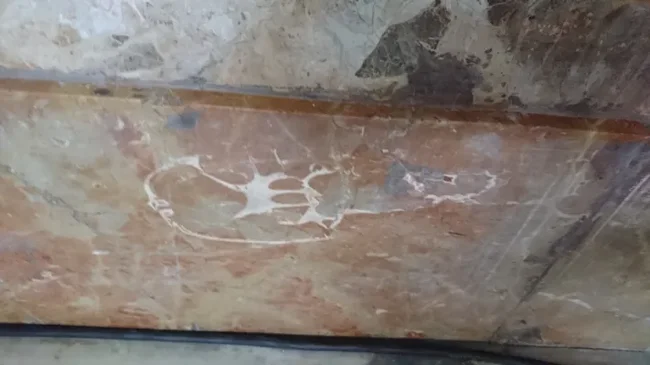
Perhaps someday we will be able to find the exact answer. In the meantime, this imprint continues to be a reminder that the history of the Earth is full of mysteries, and sometimes the most amazing discoveries can be made where you least expect them.














